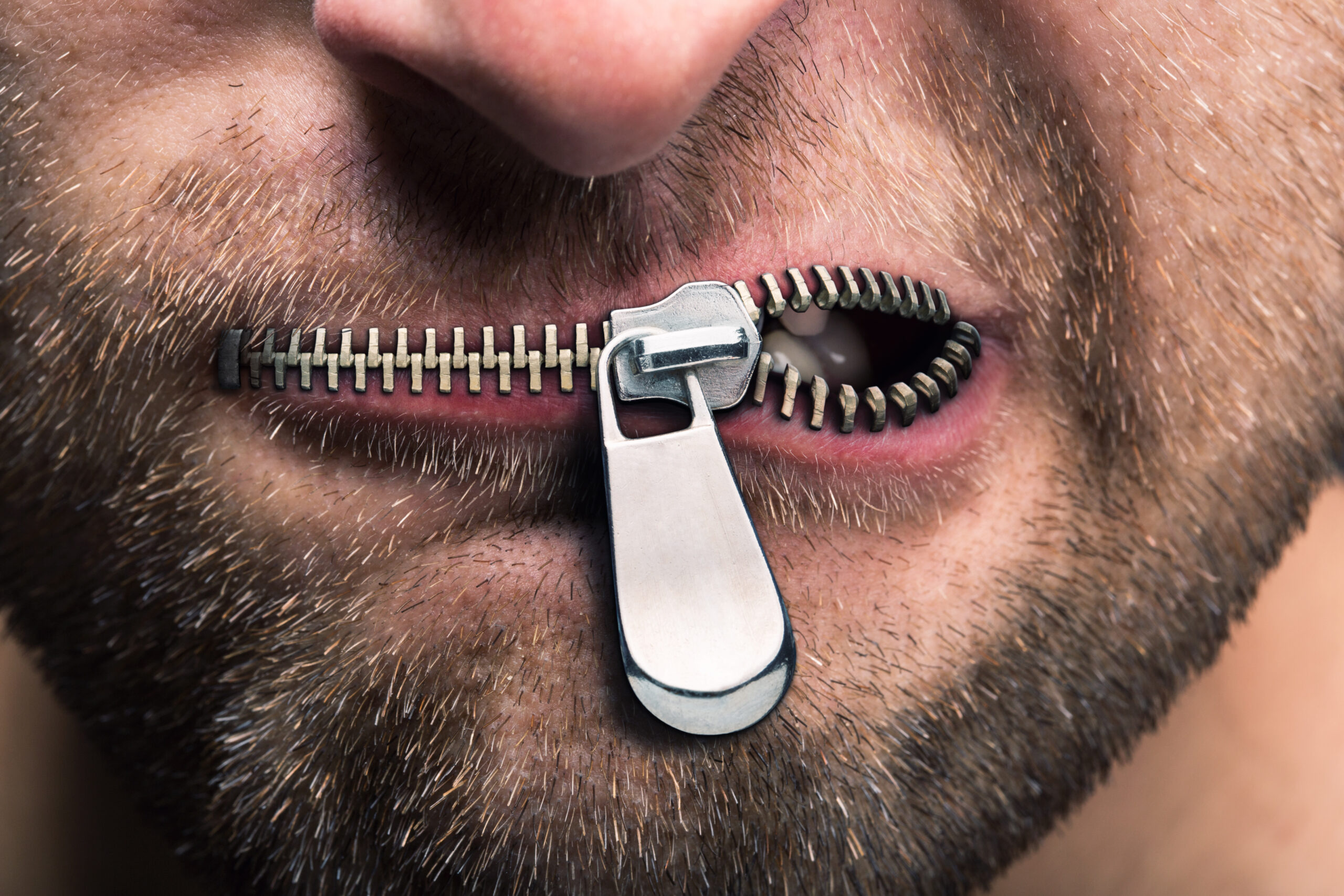
You know the old saying. It’s been suggested that 1,000 words are required in order to describe a picture, perhaps like the one above.
Does 1,000 words seem like a lot of verbiage to you or more like a spoken word drop in a bucket? For perspective, the time it takes to read an article or story that’s 1,000 words long takes only about five minutes of an average person’s time. That’s not much in the big scheme of things.
Now consider 3,000 words. It seems a lot bigger and longer – more like 15 minutes of time – a full quarter-hour (and not the Nielsen 3-minute version).
Why is 3,000 words a significant number?
It turns out that between 2005 and 2018, the average number of words spoken on a daily basis by the average person has decreased from 16,000 words per day (WPD) down to 13,000. And that has researchers at the University of Arizona concerned.
They attribute the drop – about 300 words per year to the meteoric rise of digital communication platforms, like texting and social media.
I won’t bore you with the methodology behind how these academicians go about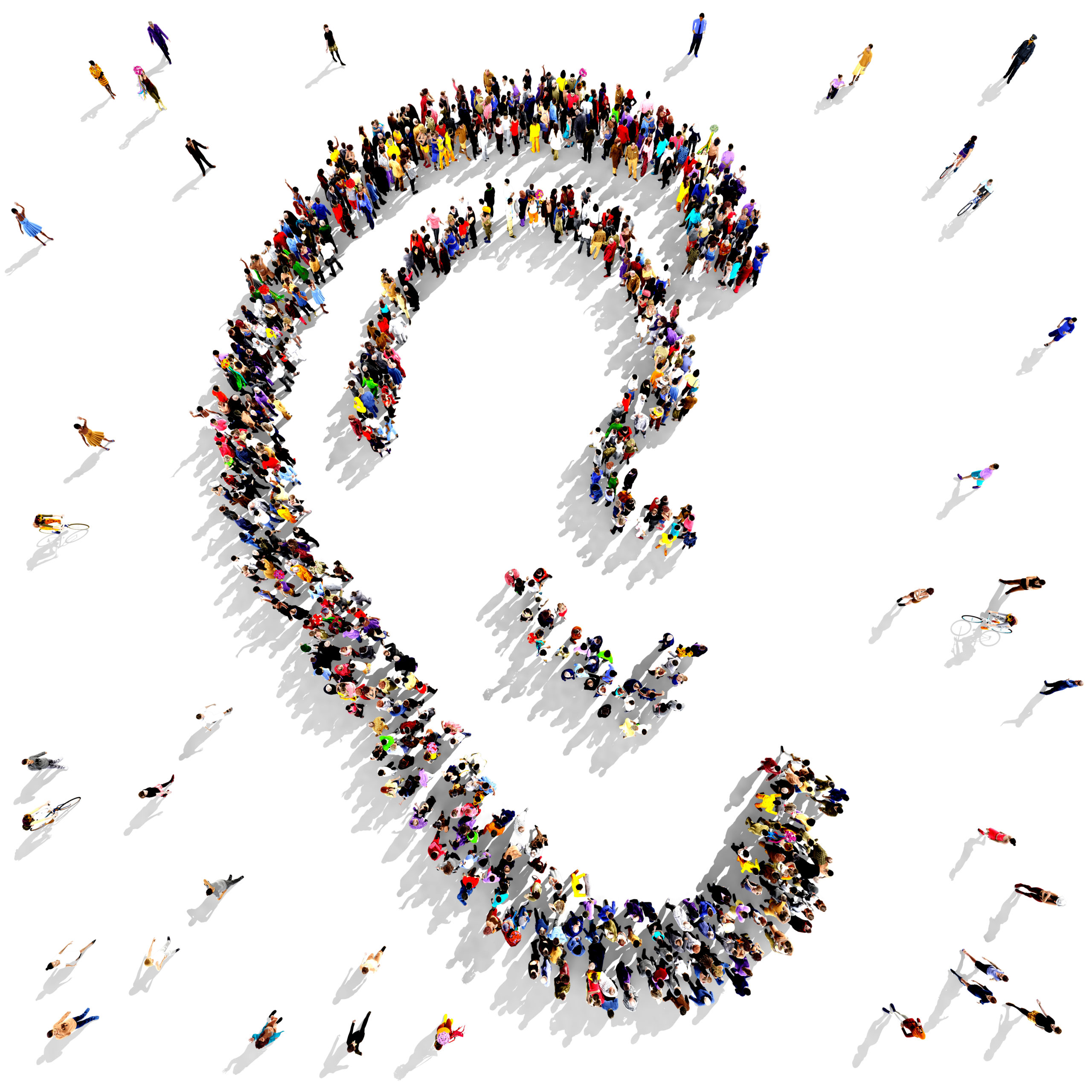 calculating WPD – you can read about their EAR (Electronically Activated Recorder) technology here in a story covered by Study Finds.
calculating WPD – you can read about their EAR (Electronically Activated Recorder) technology here in a story covered by Study Finds.
The research team zeroed in on the battle of the sexes: who talks more, men or women?
Despite the stereotypes, their data suggests that while women actually utter more words than men, the differences between the genders is modest. In other words, Venus and Mars are closer when it comes to blabbing than these scientists thought.
Perhaps you’ve seen some of the disturbing tendencies not to talk in real life, at your radio station. To solve a problem or even network, many employees (especially younger ones) would rather fire off a text or send an email rather than pick up the phone or even better, set up a coffee meeting, to form more meaningful connections and to get work done.
Sadly, COVID most definitely turned out to be a co-conspirator in this growing tendency to text first and talk later – if at all. This is where we learned the virtues of isolation and social distancing. And WFH has only served to isolate workers even more, often reducing team interaction to leaving messages on a Slack channel when a conversation might more expeditiously solve a problem, facilitate a brainstorm, or uncover an opportunity that only surfaces when actual words are spoken directly to others.
It’s all too bad the Tucson team didn’t spend more time looking at discreet age cells because my suspicion is that’s the place where they would’ve seen even sharper WPD dropoffs. All the signs point to younger generations spending less time interacting with others while they’re busy with their mobile devices. It stands to reason – they’re almost always quicker to embrace newer technology, fanatically using texting and social media long before their parents caught on to these platforms.
point to younger generations spending less time interacting with others while they’re busy with their mobile devices. It stands to reason – they’re almost always quicker to embrace newer technology, fanatically using texting and social media long before their parents caught on to these platforms.
And here’s how I’m connecting the dots – another research study covered once again by Study Finds 15 months ago suggests isolation may be a component. In “Social shocker: Average adult spends just 4 hours a month with their friends.”
The OnePoll study of 2,000 adults confirms Millennials are the least likely group to spend time with friends. You can’t lay the entire blame on technology’s doorstep, but it’s not hard to make the leap that less socializing and less talk are connected.
And that’s a big part of the reason I hold out hope that radio personalities could help be the bridge between younger consumers and interaction. In every survey we conduct at Jacobs Media, younger demographic groups are more apt to place a higher priority on connecting.
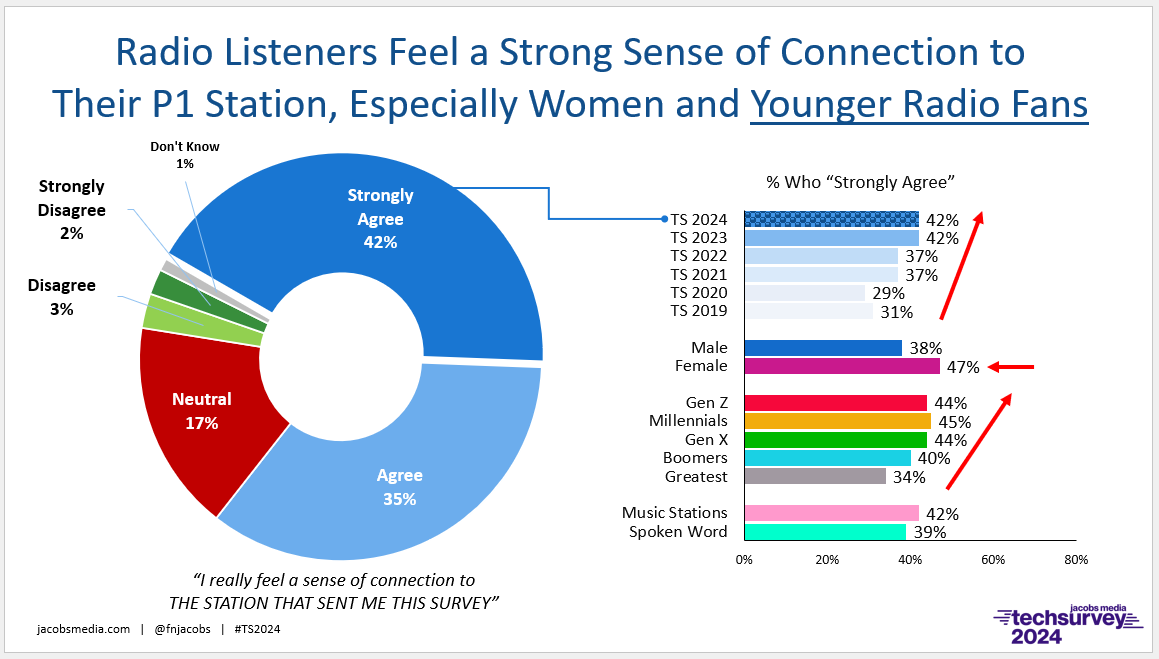
Many younger listeners also respond more positively to meeting air personalities as well as to stations being active in sponsoring events of their own. Interestingly, we see validation of this behavior in the newest edition of our Public Radio Techsurvey, magnified by Millennials, a group that sure looks like they could benefit by getting out every once in a while.
More than any other generational cohort in the 2024 version of this study, six in ten public radio Millennials agree they’d like their favorite stations to get out and about with greater regularity – a chance to be more visible in their local communities. This is the behavior that supports local audience connection, activities other audio platforms – streaming channels, podcasts, satellite radio, to name a few – simply cannot pull off.
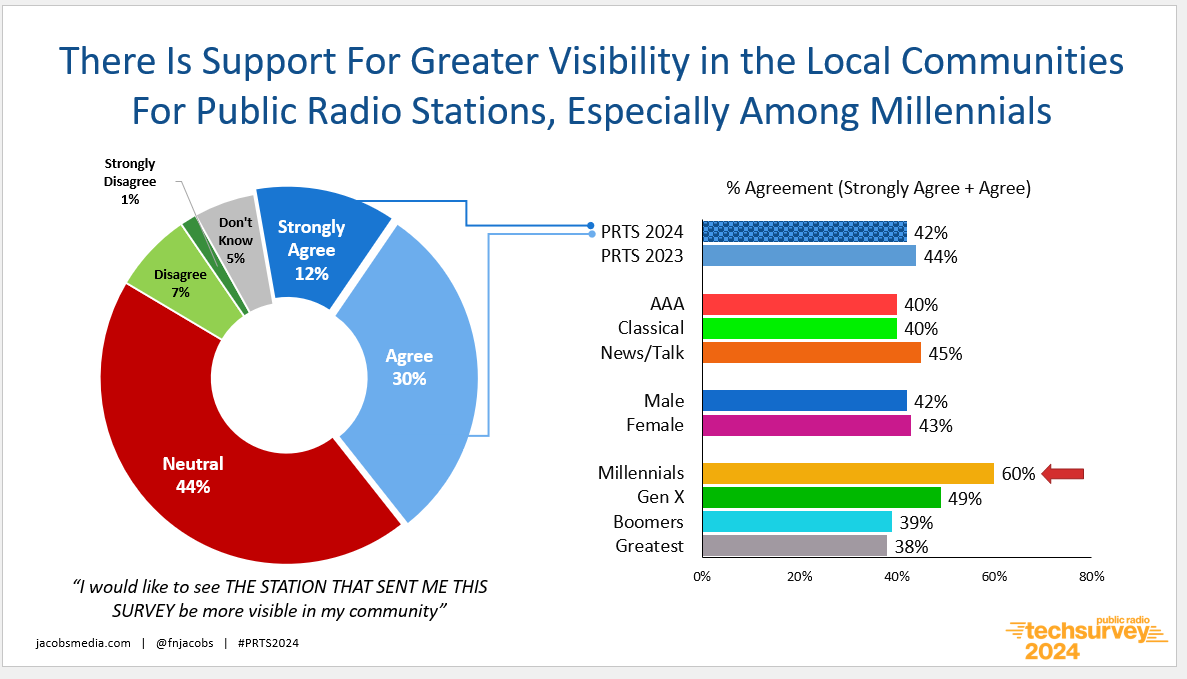
At a time when all broadcast radio – but especially public stations – are struggling to regain their focus and equilibrium in an increasingly cluttered media ecosystem, a renewed effort to engage with fans, especially younger ones, is an opportunity.
Does this mean public radio ought to consider echoing similar tactics employed by commercial stations for decades – hiring “street teams,” investing in station vehicles and remote technology, and focusing efforts on targeted event marketing could be difference makers this spring/summer/fall when listeners leave their winter cocoons, searching for something to do? Short of using a prize wheel, there is a lot about the traditional commercial radio “own the streets” model public radio stations could adopt and translate to their own style. It might turn out events are the perfect place to successfully fund raise, rather than yet another repellent pledge drive.
This is the moment for radio to capitalize on its historic strengths and forge authentic audience connections, especially among those who have been withdrawing and pulling away from friends, family, and local institutions. In a world that often seems smaller, we are somehow moving further away from one another.
institutions. In a world that often seems smaller, we are somehow moving further away from one another.
Those under 40 barely know a life without the Internet. Social media, mobile phones, and games have been integral parts of their lifestyles since they were children. And yet, we continue to see signs of alienation, exclusion, and trouble interacting with others.
Let’s start having meaningful conversations with the audience – with no limits on the number of words.
P.S. I’m not sure how it worked out this way, but this post worked out to consist of exactly 1,000 words. – FJ
- It’s The Christian (Radio) Thing To Do - June 3, 2025
- Is It Time For Radio to WAKE UP?! - June 1, 2025
- For Radio, The Perils Of Rebranding - May 30, 2025



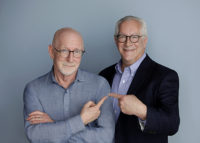
The smart managers are the ones reading your columns, taking notes, having conversations and connecting the dots. The rest are probably content doing the same-old same-old and hoping things won’t get worse. They probably also haven’t had an original thought since the turn of the millennium.
No one is actually driving the bus anymore, they are all too busy looking for cost cutting measures to hide the fact they are not attracting new business.
What needs to be done, is to make more than a token effort. Birthday shout-outs and cakes do not a community make. Nor does limiting interaction between your radio station and staff and your public. Two talk breaks of under thirty seconds does not engage your audience; worse if they are just reading liners.
It is time radio stops talking about being part of the community, and actually participates in the community.
Your last line, Phil. It’s not all that hard to engage with the locals. But it is a question of time, commitment, and the will to engagge. AI isn’t going to get this done. Genuine eye contact will. Thanks for this.
The Rome that all radio’s roads lead to is Local–as you’ve been saying for years, Fred. If I want talkless music there are abundant options nowadays, but I choose radio (even at home) for the local connection, which the air talent’s voice amplifies. (Ads don’t count!) Good news: Letting the talent talk doesn’t increase his/her salary. And isn’t their ability to communicate orally why we call them talent?
It is that simple, John. But I’m afraid the pressure of “PPM paranoia” can be too great, reducing on-air segments to short drivel. That’s not why people turn on our stations in the first place. Thanks for the reminder.
Anyone who has worked in the biz for any amount of time has seen it all. Those who could craft a story like the great Gene Shepard and the other end of the spectrum, those who just talked to hear themselves talk. Steven Wright made a career out of the :10 second stories. Setup, punchline. Norm MacDonald did the opposite -and both were incredibly admired. The key to success (or failure) is something we’re all aware of. It’s the content!! Thanks for sharing.
Thanks for the remindeer, Dave. Someone I’m connected to on TikTok has been postinng Steven Wright segments. I had forgotten the power of brief and deadpan!
My wife and I have talked about this for a while now, how the younger people cannot carry on a conversation. Ever get a clerk at the store in their 20’s, they have no conversational skills whatsoever. But we talk with them anyway. When I have a winner come in to pick up a prize, I make sure I go up front to talk with them. They may have won by texting but gosh dang it by the time they leave I’m going to know all about them and them a little about me. And if I ever see a talent at a remote standing “behind” the table….don’t get me started. You are spot on, it’s time for us to start making the connections! Thanks Fred.
It’s amazinig how interesting most people are once they have a chance to be heard because someone is actually asking them a question and is genuinely interested in what they have to say. The technology is a crutch that is a muffler of conversation. Kudos to you for taking the time to engage with them. One one level or another, I’m sure they appreciate it.
I was listening to the classic rock station in my market last fall when the Rolling Stones were playing in town. The station was live near the venue. Then they had their daily feature playing a few songs from the “Artist of the Day” which you can guess was the Rolling Stones. Not sure why they couldnt find a few listeners at the venue, introduce themselves, and a few words why “x” was their favorite Stones song.
By the way the artist feature and remote were sponsored. What if the sponsor was also one of their fav products?
This is what I think you’re talking about and a promotional fail by programming and sales.
Jerry, the promos write themselves. When you’ve got an event of this magnitude cooming to your town, it often comes down to thinking BIG and brainstorming the wonderful opportunities right in front of you. Most stations stop at the “Be my 7th caller” cul de sac when the chance to create more memorable engagement is there for the taking. Appreciate the comment and the sentiment.
Excellent piece, Fred!
Thank you!